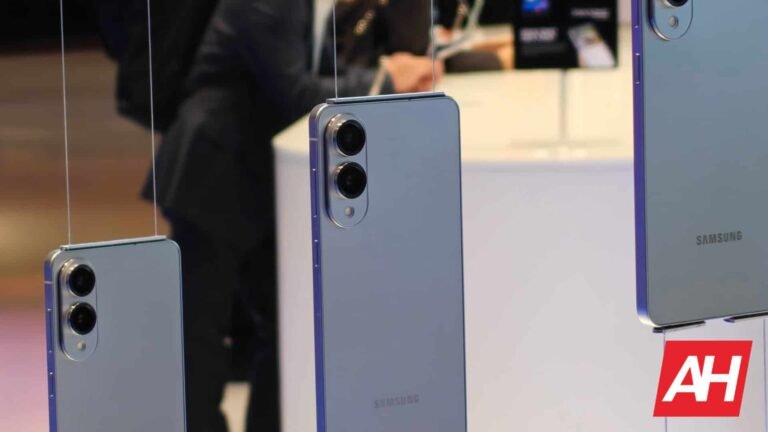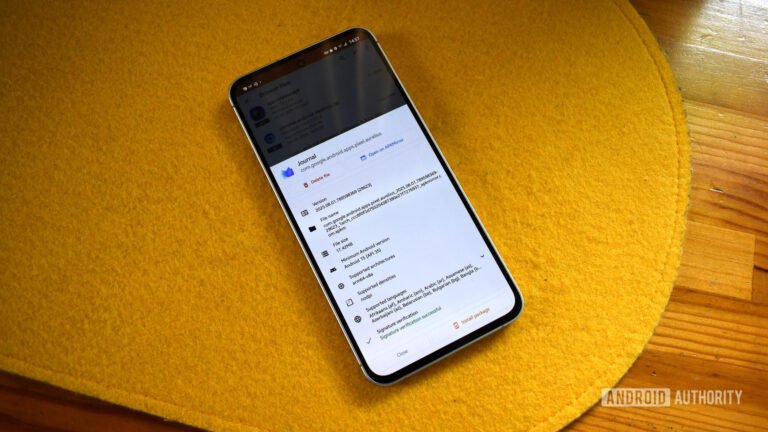![]()
The Google Pixel 10 is the company’s new vanilla offering in the latest smartphone series. It’s the most affordable Pixel 10 smartphone, but it’s still rather compelling. In this article, we’ll compare it with its predecessor. In other words, we’ll be comparing the Google Pixel 10 vs Google Pixel 9. These two phones are very similar in so many ways, but there are some notable differences, mostly under the hood.
As we usually do, we will first list the specs of both smartphones, and take it from there. Following the specs, we will be comparing their designs, displays, performance, battery life, cameras, and audio output. There is plenty to talk about here, despite so many similarities between these two phones. So… let’s get to it, shall we?
Specs
Google Pixel 10
Google Pixel 9
| Google Pixel 10 | Google Pixel 9 | |
|---|---|---|
| Dimensions | 152.8 x 72 x 8.6mm | 152.8 x 72 x 8.5 mm |
| Weight | 204 grams | 198 grams |
| Display | 6.3-inch Actua OLED display | 6.3-inch OLED |
| Refresh rate | Smooth Display (60-120Hz) | 60-120Hz |
| Resolution | 2424 x 1080 | 2424 x 1080 |
| Chipset | Google Tensor G5 | Google Tensor G4 |
| RAM | 12GB (LPDDR5X) | 12GB (LPDDR5X) |
| Storage | 128GB/256GB | 128GB/256GB (UFS 3.1) |
| Main camera | 48MP (f/1.7 aperture, 1/2.0-inch sensor size, 82-degree FoV) | 50MP (f/1.7 aperture, 1/1.31-inch sensor size, 1.2um pixel size, dual pixel PDAF, OIS) |
| Ultra-wide camera | 13MP (f/2.2 aperture, 1/3.1-inch sensor size, 120-degree FoV) | 48MP (f/1.7 aperture, 1/2.55-inch sensor size, 123-degree FoV, dual pixel PDAF) |
| Telephoto camera | N/A | N/A |
| Periscope telephoto camera | 10.8MP (f/3.1 aperture, 1/3.2-inch sensor size, 5x optical zoom, 23-degree FoV) | N/A |
| Selfie camera | 10.5MP (f/2.2 aperture, 95-degree FoV) | 10.5MP (f/2.2 aperture, 1/3.1-inch sensor size, 1.22um pixel size) |
| Battery size | 4,970mAh | 4,700mAh |
| Charging | 30W wired, 15W Qi2 wireless (charger not included) | 27W wired, 15W wireless (with Pixel Stand), 12W wireless (Qi), reverse wireless (charger not included) |
| Colors | Indigo, Frost, Lemongrass, Obsidian | Obsidian, Porcelain, Wintergreen, Peony |
Google Pixel 10 vs Google Pixel 9: Design
These two smartphones have an almost identical design. The only differences are the number of cameras within their camera visors, weight, and thickness. The Google Pixel 10 has three cameras on the back, compared to two on the Google Pixel 9. That phone is also a bit heaver, by 6 grams, and it’s also 0.1mm thicker, which is not really noticeable. That’s it. Everything else is basically the same design-wise.
Both smartphones have a flat display, with a flat backplate, and a flat frame. Their corners are rounded, while all physical buttons sit on the right-hand side. The power/lock button is placed above the volume up and down keys. A centered display camera hole is included, along with uniform bezels around the display. Both smartphones are made out of aluminum and glass, in case you were wondering, and yes, they’re both quite slippery.
If we flip them around, you’ll see basically the same camera visor on both of them. The Pixel 10 does have one extra camera inside of it, so it does look a bit different. Both camera visors are pill-shaped, and both of them protrude on the back. These two smartphones are IP68 certified for water and dust resistance, and they have identical dimensions, aside from the thickness difference, if we can call it that.
Google Pixel 10 vs Google Pixel 9: Display
Google didn’t really change the display either, the same goes for its protection. The Pixel 10’s display does get a bit brighter, though, which is worth noting. Not by much, though. Both of these smartphones include a 6.3-inch OLED display with a 120Hz refresh rate. They both support HDR10+ content and have a screen-to-body ratio of around 86%. The screen-to-body ratio here is 20:9.

The Pixel 10 display’s peak brightness is 3,000 nits, while the Pixel 9 can go up to 2,700 nits. That’s not a major difference, but still, it’s worth noting. We didn’t really notice the difference during use. Both displays offer a resolution of 2424 x 1080 pixels, while both of them have the same protection as well. Corning’s Gorilla Glass Victus 2 protects both of these panels, in case you were wondering.
You’ll get essentially the same experience with these two panels, at least as far as we can tell. They’re both vivid and sharp. They have good viewing angles too, while the touch response is solid. Both displays also get bright enough, they are not lacking in that regard. There’s not much to complain about here, as not many people will find things to complain about. Yes, there are better displays out there, but these two will do for the vast majority of people, easily.
Google Pixel 10 vs Google Pixel 9: Performance
The Google Pixel 10 is fueled by the Google Tensor G5 processor. That is Google’s new 3nm chip, and the first Tensor chip made by TSMC. It’s a 3nm processor. That chip is paired with 12GB of LPDDR5X RAM inside the Pixel 10, and either UFS 3.1 or UFS 4.0 flash storage. The Pixel 9, on the other hand, comes with Samsung-made Google Tensor G4 chip, a 4nm processor. That chip is paired with 12GB of LPDDR5X RAM and UFS 3.1 flash storage too. Neither phone supports storage expansion.
Do note that the Pixel 10 with 128GB of storage uses UFS 3.1 flash storage, while the 256GB storage model utilizes UFS 4.0. That’s definitely the version we’d recommend. UFS 4.0 is much faster and it’s also better with power consumption. The Pixel 9, on the other hand, is limited to UFS 3.1. Both phones do perform really well during day-to-day use. The Pixel 10 is a bit snappier, though.
When it comes to gaming, you will notice the difference. The Pixel 10 doesn’t heat up as much as the Pixel 9, not even close. Even after half an hour of playing COD Mobile, for example, the phone was barely warm. That’s not the case with the Pixel 9, not at all. Neither of these two phones are made for games, but as you can see, they can get away with it, especially the Pixel 10, even with more demanding titles.
Google Pixel 10 vs Google Pixel 9: Battery
The Google Pixel 10 features a 4,970mAh battery on the inside. The Pixel 9, on the flip side, ships with a 4,700mAh battery. Yes, Google improved the battery capacity inside the Pixel 10, and yes, it is something you will notice. That, in combination with the Tensor G5, and some other changes, does reflect on battery life. Granted, both of them offer really good battery life, however.
We were able to go over the 7-hour screen-on-time mark with the Pixel 9, without a problem most of the time. The Pixel 10 is showing even better results that the Pixel 9, though we’re still testing the phone. It took a couple of days for the phone to learn our usage patterns, and following that, the battery life has been solid. Based on what we know now, even more demanding users will likely be happy with the battery life.
The Google Pixel 10 supports 30W wired charging, along with 15W Qi2 wireless charging. Yes, the phone supports proper Qi2 charging, and has magnets built-in. It does not support reverse (wireless) charging, however. The Pixel 9, on the flip side, supports 27W wired, 15W wireless (with Pixel Stand), 12W Qi wireless, and 5W reverse wireless charging. Neither phone ships with a charger in the box.
Google Pixel 10 vs Google Pixel 9: Cameras
The Google Pixel 10 has three cameras inside that camera bar on the back. A 48-megapixel main camera (1/2.0-inch sensor size) is backed by a 13-megapixel ultrawide camera (1/3.1-inch sensor size). The third camera on the back is a 10.8-megapixel periscope telephoto unit (1/3.2-inch sensor size, 5x optical zoom).

The Pixel 9, on the other hand, includes two cameras on the back. Its main camera is a 50-megapixel unit (1/1.31-inch sensor size), while its second camera is an ultrawide unit. That camera is a 48-megapixel unit (1/2.55-inch sensor size, 123-degree FoV). You will notice that the main camera has been degraded on the Pixel 10, and the same goes for the ultrawide snapper, too. At least the Pixel 10 has a zoom camera, however.
We are still testing the Pixel 10’s cameras, but they don’t seem to be on the same level as the Pixel 9’s. The difference doesn’t seem to be all that big, despite the hardware difference, but when you go into challenging conditions, Google’s software can only do so much. We’ll still testing, though, but that’s what we’re seeing thus far. You’ll get more information in our full review of the Pixel 10. The zoom camera is a very nice addition, though, even though it’s not the same one as on the Pixel 10 Pro and Pixel 10 Pro XL.
Audio
Both of these smartphones ship with stereo speakers. The loudness they provide is really good, actually, and so is the quality of the sound output. There’s really not much to complain about here, in all honesty.
You will not get an audio jack on either phone, however. You’ll need to utilize the Type-C ports that each of these two phones have, one on each, of course. If you don’t plan on using wired headphones, the Pixel 10 supports Bluetooth 6.0 for wireless connectivity, while the Pixel 9 comes with Bluetooth 5.3.
The post Phone Comparisons: Google Pixel 10 vs Google Pixel 9 appeared first on Android Headlines.

